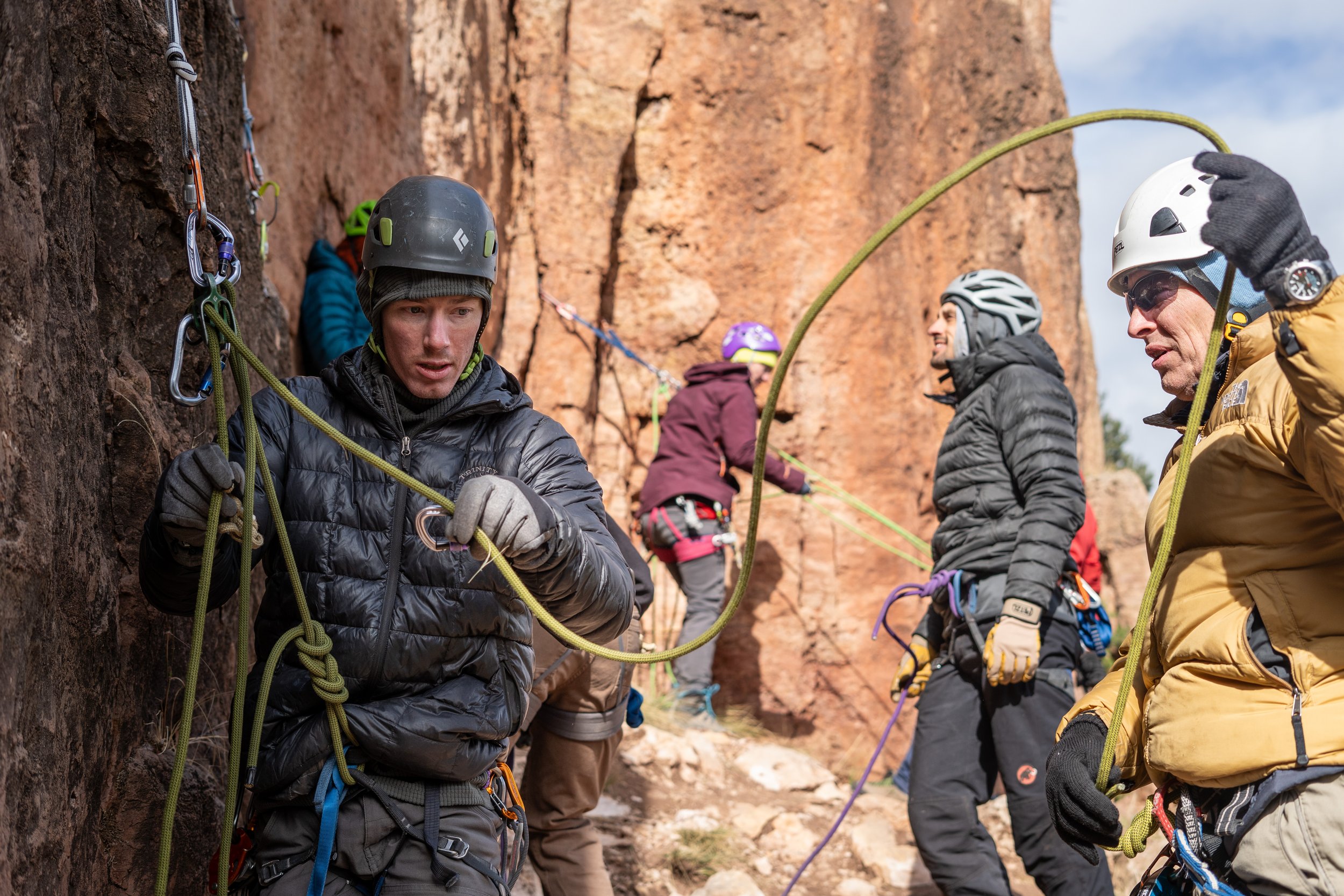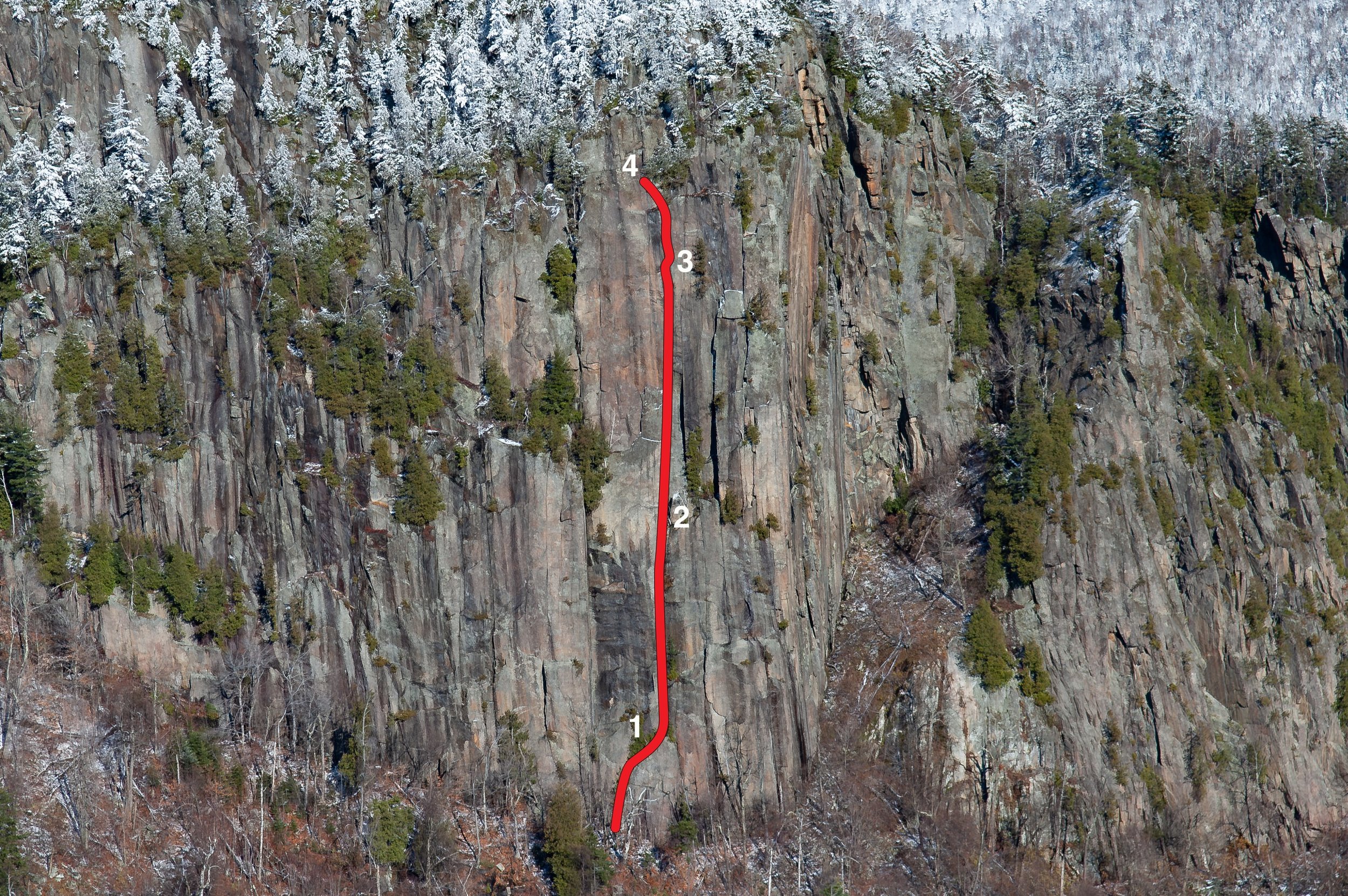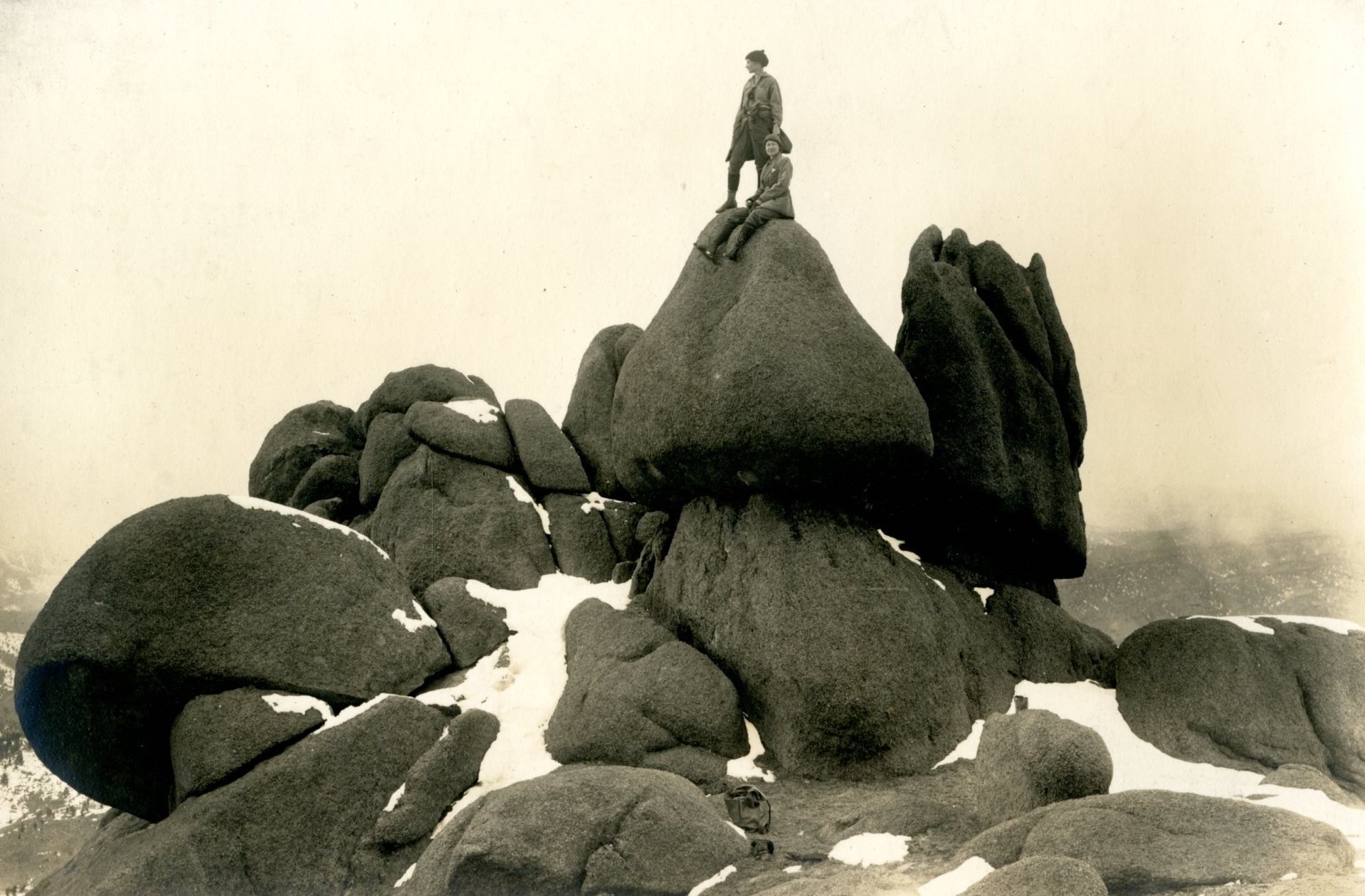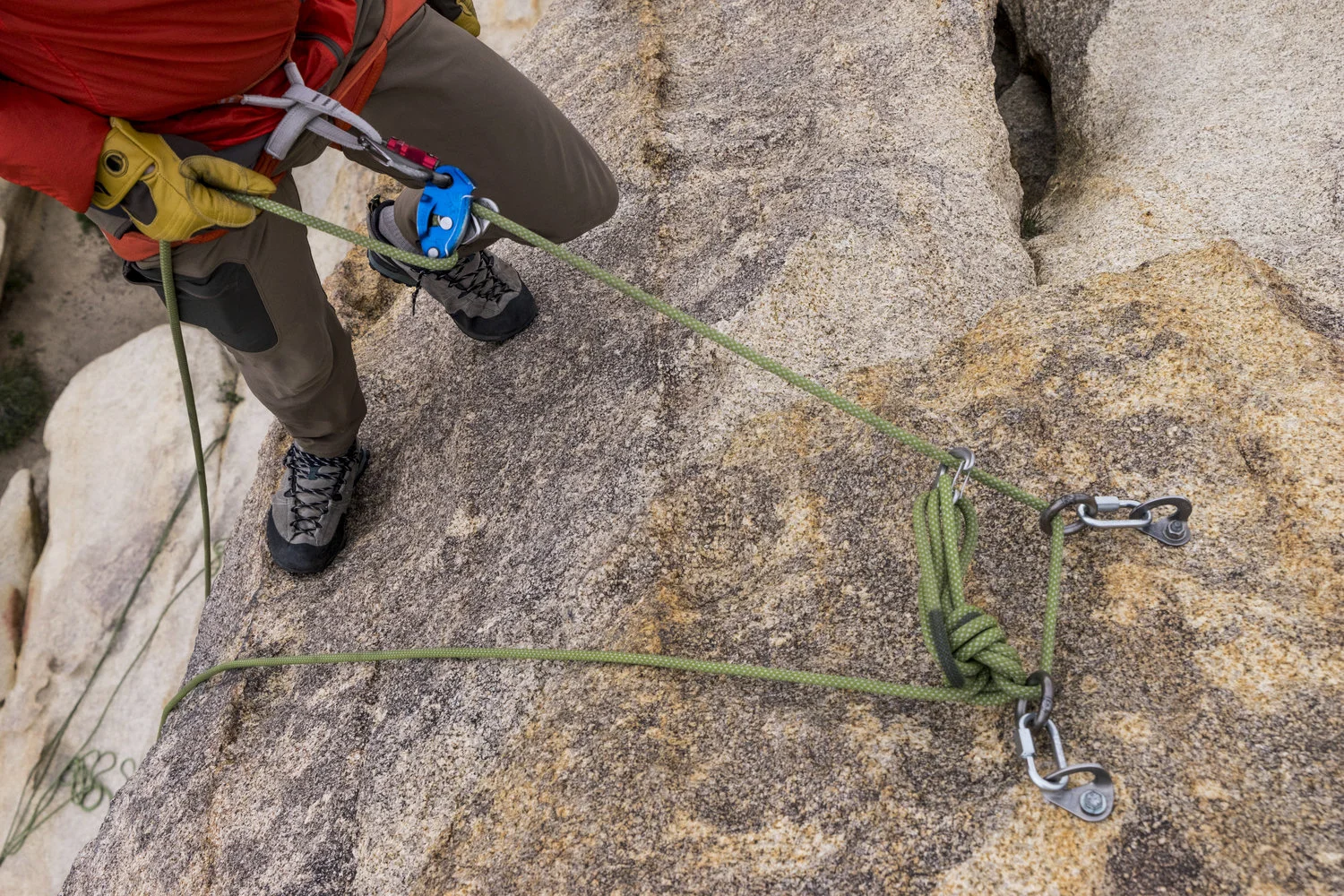In the United States, many incidents and inefficiencies are caused by miscommunication within a climbing team. Often, highly consequential information needs to be relayed between climbers and belayers, and miscommunicating that information has unfortunately resulted in grave consequences. At the American Alpine Club, we have been gathering these unfortunate stories for over a century, and many incidents could have been entirely avoided had the team communicated more clearly. However, any skill that involves the use of language tends to resist standardization; it’s a challenge that has frustrated American climbers in all disciplines.
One of the first climbers to try to address these challenges was Paul Petzoldt. In The Wilderness Handbook he writes, “Unindoctrinated by the standard European techniques and philosophies of [the world war-era], I developed some new skills and ideas. I invented the first voice-signal system (now universally used in America).” American climbers have largely adopted and gravitated to some version of Petzoldt’s verbal commands for the last 100 years, because his assertions are as true today as they ever have been. Petzoldt wrote:
The human voice is difficult to hear and understand on a mountain. The belayer might be out of his companion’s sight, words do not carry well around rock projections, wind and rain sometimes make conversations impossible, even at short distances. Because of such interferences, I have developed voice signals that are brief and intelligible even when faintly heard.
Petzoldt’s innovation was insightful, and it informs the concepts espoused in this article. But, the Petzoldt voice signals that sound so familiar to so many climbers, can easily be obfuscated by a busy crag, dialect or nuances in pronunciation, and by the use of names within the voice signals—names distort the syllabic distinction that Petzoldt originally devised.
Communication, as a concept, has to be grounded in something less complex than language or speech or any group of practices that is so easily undermined by the nuances of dozens of individual cultures. It’s important to remember that communication is not always about language. Climbers who do not have the ability to hear, to speak, or to see have always managed to communicate with others, and those individuals climb in the United States as well. There is a need to address climber communication in a way to focuses on the essential goal climbers are trying to achieve, and language is only one of many ways climbers communicate.
In this article, we will explore why communication is so vital to climbers. We will explore the principles that should govern communication in all contexts, and from those principles we will make recommendations that are mostly likely to work in most contexts.
Why is Communication so vital to climbers?
Communication often results in establishing or relinquishing safety systems, like a belay, and establishing or relinquishing a safety system inappropriately can be dangerous.
AND
Climbing environments make communication difficult. Climbers find themselves in cacophonous surroundings (windy and rainy conditions, busy crags and climbing gyms with lots of competing voices, loud environments like roadsides, roaring rivers and streams, chirping and singing wildlife). Climbers are often out of sight of one another, making traditional nonverbal communication difficult.
Climbing environments often make communication difficult. The sound of the ocean, in this case, makes it important address the fundamental principles of effective climber communication before the climbing starts.
Fundamental Communication Principles
Fundamentally, all formal climbing communication serves to mitigate the inherent hazards of climbing. Many of the climbing commands typically employed concern management of the rope system, which in turn affects the belay and the security of the person being belayed. The simple command “On belay” may be the best example of a rope system command. An additional set of commands exists to address the hazard of falling objects, “Rope!” and “Rock!” being the most prominent examples.
Effective formal communication in a climbing system relies on commands that follow three foundational principles:
Communication Agreement. Communication between climbers and belayers should be anchored to a script that is agreed upon prior to the need for the communication.
Communication Precision. Communication should strive to minimize the amount of oral traffic needed to relay information between parties.
Communication Action. Communication should imply an impending action, and therefore should unambiguously initiate that action. Communication also may be used to affirm the completion of an action.
Communication Agreement
Climbing commands are only effective if all members of the climbing party agree on what commands will be used and the explicit actions they imply. For example, there are a number of commands associated with eliminating slack from a belay system, including, “Take,” “Tension,” “Up rope,” and “That’s me.” Each of these commands carries a nuanced meaning that must be known by the belayer in advance in order for her to respond appropriately when her climber issues such a command.
Every climber can appreciate what it's like to call for tension in the rope system. Paul Petzold originally specified "TENSION" as the preferred voice signal, because it has two syllables, just like all the other commands that involve tightening the belay. Today, "TAKE" is a common command, but the single syllable can easily be confused with "SLACK," which is the opposite of what this climber wants right now.
Establishing different formal climbing commands prior to every climbing outing with a new partner can inconvenience the climbing experience in little ways, but it's almost always worth the a little inconvenience at the beginning of the day in order to avoid an accident. Once the communication agreement has been established, a climbing team can default to that agreement until the conditions or the context necessitates an adjustment.
There are common tropes and patterns that speakers of American English will recognize, regardless of region or background. Still, slight variations persist from one group of climbers to the next, and climbers should engrain the ritual of affirming their communication strategy before the climbing outing begins. The most common theme in miscommunication-related incidents involve climbers who neglected to have a vital “agreement” conversation prior to their climb. A simple conversation would have alleviated the confusion.
Communication Precision
Another common theme in miscommunication is over-communication. The climbing team might attempt to rely on informal communication and conversation when precise and unambiguous commands are needed. The communication might be redundant and therefore unnecessary. In both cases, the climbing team fails to appreciate that precision (communicating a precise action, no more and no less) is a fundamental concept.
When conditions are challenging, informal communication should be entirely eliminated to prevent miscommunication of important formal commands. For example, if the leader has climbed around a corner and into the wind, she would be wise to only use formal climbing commands with her partner to prevent being taken off belay prematurely.
Similarly, redundant commands over-communicate and create ambiguity. Some novice lead climbers use the commands “Clipping” and “Clipped” to inform their belayer that they will be clipping the rope into a quickdraw. “Clipping” implies that the leader will need additional slack to clip the carabiner; the formal command “Slack” is already used to alert the belayer to introduce slack into the belay system. “Clipping” is therefore a redundant communication.
“Clipped” suffers from problems with both redundancy and ambiguity; two meanings may be implied. First, the leader may be asking the belayer to remove unnecessary slack from the belay system (in which case a number of commands may do the job). Second, the leader may also be asking the belayer to check the clip: is the leader back-clipped? Z- clipped? Often, this task is impractical or impossible for the belayer to accomplish. Finally, both, “Clipping,” and, “Clipped” are unnecessary assuming the belayer is attentive. No system of communication, even if it is fundamentally thoughtful, can compensate for inadequate belaying.
"CLIPPING" and "CLIPPED" are rarely vital communications if the belayer is attentive. A climbing team that prioritizes precision will eliminate unnecessary communication in order to minimize ambiguity and miscommunication.
When communication become challenging, eliminating unnecessary command or conversation allows the climbing team to anticipate essential climbing commands based upon their previous communication agreement.
Communication Action
Communication should have a clear and unambiguous relationship with an impending action. For example, “Off belay,” is often used to initiate the deconstruction of a belay system. As any climber can appreciate, the action that corresponds to the communication is often highly consequential, and in many cases an affirmative response to the action helps signify the severity of the action that has occurred. Climbing teams will often use affirmative responses like “Belay off” to signify the completion of an important action. However, any command which does not include or affirm a call to action can easily be interpreted for something it is not intended to be, and such inactive communication should be avoided.
For example, some climbers use the command, “Safe,” or, “In direct,” to imply that they are secured to an anchor in some way. However, these commands are superfluous--there is no action for the partner to take in response to this command, nor is there a corresponding affirmation. Instead, the climber could simply say “Off belay” if intending to secure herself and belay from above as in a multipitch climb. Alternately, the climber could say nothing at all and simply request “Slack,” if cleaning an anchor on a single pitch climb, for example.
Fundamentals of Communication in Practice
The following examples explore the use of fundamental communication principles in real-world scenarios and demonstrate an application of those principles to scenarios that are familiar to many climbers.
Scenario 1: Casual cragging with lots of other parties.
Perhaps the most frequent scenario in modern climbing has the climber and belayer starting together at the base of a pitch. Whether leading or top roping, the commands used are the same. Drawing on the most common climbing commands in the United States, our climber, Maria, queries her belayer: “Jorge, are you on belay?”
As the formal climbing command is a call to action, Jorge physically checks the entire belay system, ensuring his belay device is loaded correctly, the carabiner is locked, his harness is fitted properly, the rope is running properly through an adequate anchor if appropriate, his climber’s harness is fitted properly, and his climber has tied into her harness correctly. When appropriate, Jorge also ensures both he and his climber are wearing helmets. Only after completing all of these checks and confirming them with his partner can Jorge say, “Maria, your belay is on.”
In their communication agreement, Jorge and Maria decided to use each other’s names in their verbal commands. This strategy is particularly important when communicating in a crowded location or noisy environment, such as a climbing gym or a busy sport climbing crag. In the multipitch setting, preceding the command with a name is equally important as it alerts the recipient that a command follows and ensures that adjacent parties do not misinterpret the other party’s communication for their own.
With climbing teams all climbing side by side, the use of names in voice signals is an advisable part of any communication agreement.
Jorge and Maria will use each other’s names to precede all of their verbal commands today, because that is part of their communication agreement, it is a precise way to specify which commands are directed to whom, and the teams needs a way to differentiate between vital commands that initiate action and the informal banter that will surely characterize their time at the crag.
Scenario 2: Multipitch Climbing
Jorge and Maria are now on a multipitch climb. They begin a pitch sharing a stance at an anchor together, so communication is straightforward prior to the lead. However, once Maria tops out the pitch, there’s a need for terse, precise, and unambiguous action-oriented communication. Belays will be deconstructed and the climbing team will be transitioning from one safety system to the next.
In their communication agreement, Jorge had two main concerns. Jorge wanted to know when exactly to start removing his belay device. He had an experience in the past when he thought the leader said “Off Belay.” On that day, the leader was actually shouting to a rappelling party, “I’m out of the way.” Jorge took the leader off belay prematurely that day, and he never wants to make that mistake again. On a completely separate outing, Jorge was taking his GriGri off the rope when the leader started pulling up the rope. The unexpected tug of the rope yanked Jorge’s GriGri out of his hands and it fell all the way down the cliff. Jorge doesn’t want to deal with either of these miscommunication problems again.
Maria and Jorge agreed that names will be less important today on this isolated climb; no other climbers are around. They’ve also agreed that when the leader shouts “Off Belay,” the belayer will immediately shout “Belay Off.” The leader will have one last chance to object, if Jorge has misheard the verbal command. Jorge agrees to wait a short second before deconstructing the belay.
Also, the leader agrees not to start pulling up rope until she hears the belayer shout “Maria, Up Rope.” It’s important for every climbing team to appreciate that Maria and Jorge could’ve agreed on a completely separate sequence here, and a completely separate set of commands to communicate that sequence. The vital point here is the relationship between prior agreement and precision; Maria and Jorge are being conscientious about both fundamental principles.
When the rope is tensioned against Jorge or his attachment to the anchor, he’ll inform his partner by saying, “That’s me.” This signals to Maria that the tension she feels in the rope is due to Jorge’s weight and not some other potential predicament, such as the rope being wedged in a crack or ensnared around a horn of rock. Maria’s call to action with this command is to put Jorge on belay immediately. “On Belay”
Jorge can now prepare to climb, secure in the knowledge that he is belayed from above. When he is ready to climb, he can inform his belayer with a simple, “Climbing!” A reply of, “Climb on!” will see Jorge to the top of the pitch to rejoin his partner.
Note that in the above exchange, Jorge does not query Maria as to whether he is on belay. There is no need as Maria will put Jorge on belay in response to the command of, “That’s me.” Further, Jorge may not be able to see Maria as she concludes her lead. Consequently, he will likely not know for sure when Maria has established an anchor and is ready to belay. In the best case, voicing, “On belay?!” will not elicit a call to action from Maria other than to say “No, not yet,” unless Jorge happens to pick just the right moment to ask. Asking if he is on belay simply introduces unnecessary, informal communication. In the worst case, shouting, “On belay?!” may be misunderstood as “Off belay!” Maria is likely to find this rather alarming if she has yet to complete her lead.
Scenario 3: Communicating without Commands
It is possible for a climbing party to communicate unambiguously without the use of verbal commands, thereby eliminating the potential for poor verbal communication or miscommunication. Provided the party can agree up on a system in advance, this is readily achieved. Let’s revisit the example in scenario 2 to see this in action.
Maria reaches the top of the pitch and secures herself to the anchor. Because they suspected the possibility of poor communication, Jorge and Maria agreed in advance to use only the necessary formal verbal commands. As Maria is secured to the anchor, she shouts, “Off belay!”
Unfortunately, Jorge is unable to hear this command. However, he knows that there are only two reasons that he might need to feed rope to the leader. Either Maria is still leading, or she has arrived at the belay stance and is pulling up excess rope. Since Jorge is unsure which is the case, he simply continues belaying until he reaches his end of the rope. As he did not hear Maria issue the “off belay” command, he has no reason to affirm this command. Instead, he skips this and simply proceeds to the next command, “Maria, that’s me!” He then removes his belay device from the rope.
Maria has pulled the rope until it is tensioned and thinks she hears Jorge shout a command to her, but she’s not positive. Regardless, her next step is clear: put Jorge on belay. She does so promptly and shouts, “On Belay!”
Meanwhile, down below, Jorge is diligently waiting to climb. Prior to starting the climb, Maria and Jorge agreed to a 30- second waiting period. After shouting, “Maria, that’s me!” Jorge waits 30 seconds and then removes himself from the anchor to begin climbing. He does this knowing that Maria will promptly put him on belay after the rope is tensioned, a task that should take no more than 30 seconds. Jorge and Maria could have agreed to any amount of time they felt appropriate; again the prior agreement is the important thing.
After the agreed upon amount of time, Jorge bellows, “Climbing!” and makes a couple moves. He has one last chance to make sure that he is on some form of belay. He’s making sure the rope is travelling up, in the characteristic progression of a belay cycle. In this sequence, Jorge and Maria have accepted that it might also be possible that Maria is not actually belaying. It is possible that she is still leading, and the team is now accidentally simul-climbing. Even though it’s scary and hopefully avoidable, Jorge and Maria appreciate that Jorge will have to climb in that scenario, even if he’s not on belay. What choice does he have?
Meanwhile, back at the top of the pitch, Maria cannot hear Jorge, but she can feel the slack in the rope he generates by climbing. She pulls the rope through the belay system and after a few feet of movement is sure Jorge must be climbing. As a confirmation, she yells, “Climb on!”
Troubleshooting Communication Challenges
Select belay stances and pitch lengths that enable communication, when feasible.
Occasionally, verbal communication is challenging or impossible. This happens most often on multipitch routes and can result from many factors, including a pitch that traverses around a corner or crosses a ridgeline, high winds, or stretching or linking pitches. The best strategy for these situations is simply prevention. Whenever possible, select stances that enable good verbal communication, or even visual communication if possible. Research the route thoroughly to know when your partner might be out of touch. Consider belaying at an appropriate stance even if the guidebook does not indicate the stance as a typical belay point.
This climbing team could have chosen to belay an any number of places. The huge river gorge, the imposing rough, and the presence of other climbing parties nearby compelled the party to shorten the pitch-length and optimize communication.
The conventional wisdom is that stretching the rope and linking pitches results in a faster ascent as there are fewer belay transitions to be made. However, 15 minutes wasted shouting to a partner 200 or more feet distant certainly bears a greater time cost than two or even three efficient belay transitions.
Visual communication is helpful when verbal commands are inaudible.
Unfortunately, sometimes poor verbal communication simply cannot be prevented. This leaves a few options for alternative communication systems. A visual command system is one such solution. Such a system needs to be established in advance, but can be effective provided that appropriate belay stances are selected. Most often, a negative and affirmative command are all that is needed. For example, when the leader reaches the top of the pitch, she secures herself, then leans out to look down at her belayer and makes a slashing motion across her throat, indicating, “Off belay.” When the belayer has removed the belay device from the rope, he returns the signal. When the leader has put the follower on belay, she leans out and gives a thumbs-up signal straight overhead, indicating, “On belay.”
Beware of Rope Tugs.
A more common approach is a system of rope tugs used by the leader to communicate with the follower when she is off belay. Unfortunately, any system relying on rope tugs introduces significant ambiguity and the potential for miscommunication. For example, the climbing party may agree that three rope tugs from the leader means, “Off belay.” However, the leader might also issue three similar feeling rope tugs as a result of a potentially stuck rope or simple rope drag. If the belayer interprets this as a call to action, though, the leader may find herself unintentionally off belay for the remainder of the pitch.
Many climbing parties enjoy success with the rope tug technique, and their success usually hinges on a smoothly executed rope line, and a discipline avoidance of any rope movement that could be interrupted as a tug.
A second rope can be a communication tool too.
When climbing with two ropes, whether half ropes, a lead line and tag line, or as a party of three, the leader can unambiguously communicate the “off belay” command. Upon securing herself to the anchor, the leader’s next step is to pull up the ropes. By pulling up the trailing line first (or only one of the half ropes), the leader can clearly indicate that she is stopped at the belay stance as the lead rope is not moving.
Just like the rope tugs, there can be opportunities for ambiguity here. It helps for the climbing teams to consciously avoid these signals. If the isolated movement of one of two ropes is agreed to be an "Off Belay" signal, a leader should not move that rope independently unless she is off belay.
Radios, Cell Phones, and Technology
FRS radios are another option and can ease communication considerably over long distances or in poor conditions. However, radios have a number of drawbacks, including weight and costs. Further, radio communication quality varies, both in transmission clarity and range. Additionally, radios rely on battery power, yielding an additional battery to manage. Should batteries die, over- reliance on radios may also leave a party ill-prepared to use an alternative form of communication. Despite these costs, radios can be effective and beneficial in appropriate contexts, such as multi-party climbing, expeditionary climbing, and complex ski descents. Similarly cell phones and text messages have a comparable potential and drawbacks. These technologies all present the same conclusion to a climbing team: do not rely too heavily on technology. Climbers have been communicating quite effectively without these technologies, and those traditional communications skills have value.
Pre-Climb Communication
Special Thanks to Contributors
Also, members of the AAC Education Task Force were enormously helpful with feedback and commentary on this article. Special thanks to Mark Vermeal, Jon Tierney, Dale Remsberg, Dougald MacDonald, Aram Attarian. AAC Staff were also a great help. Thanks Phil and Whitney in particular.























